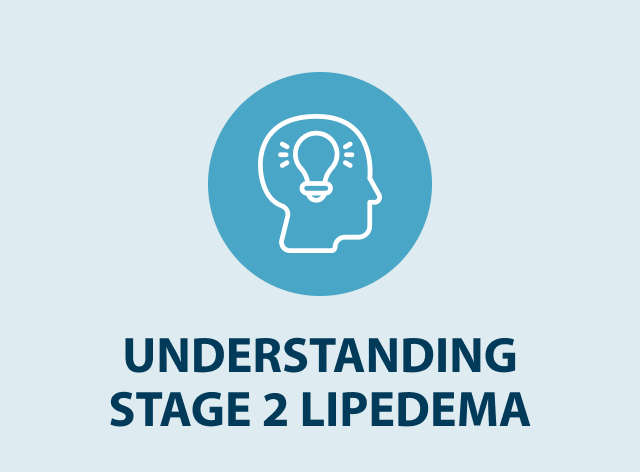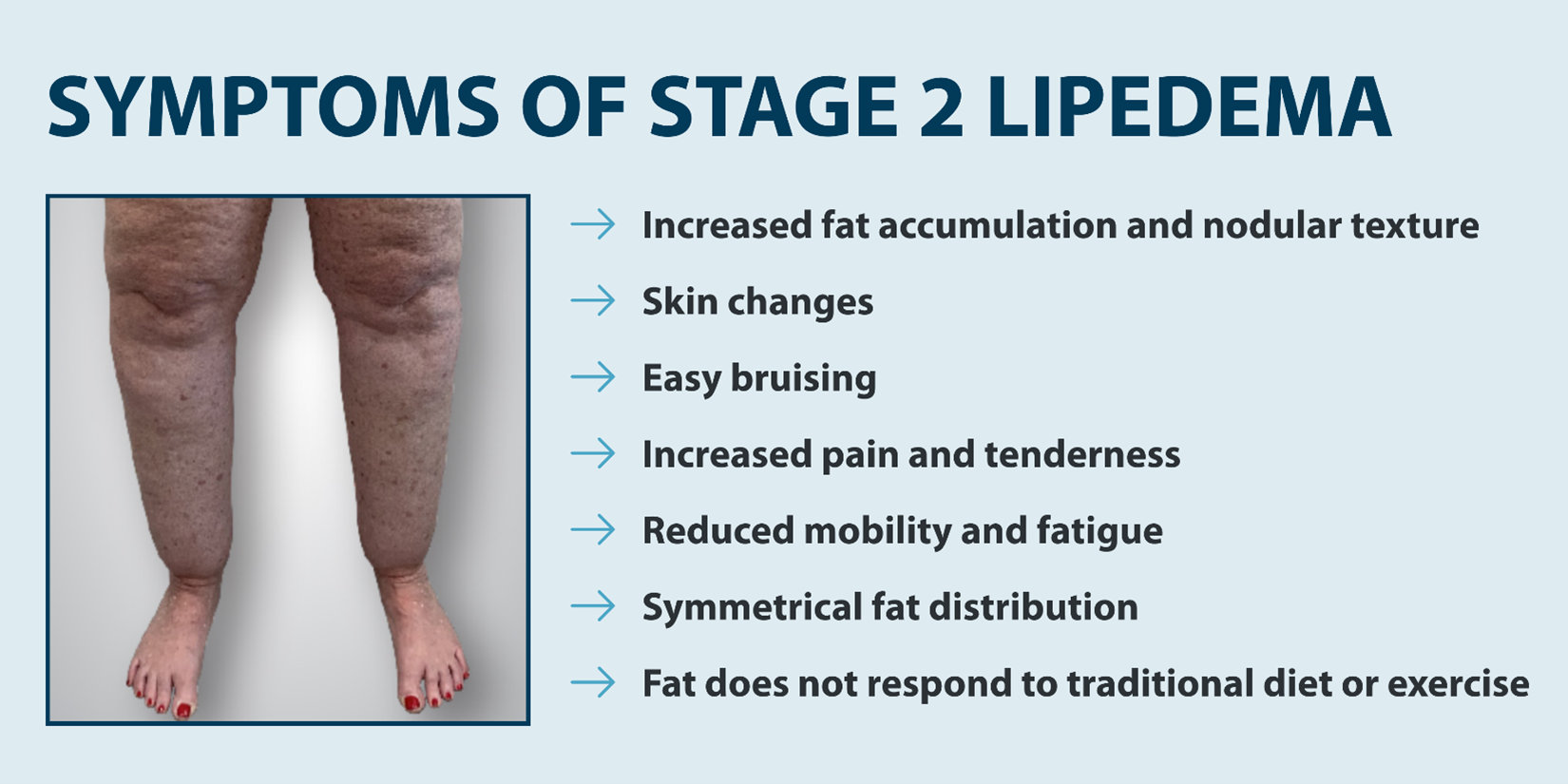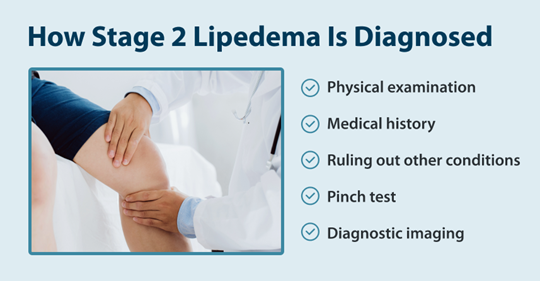References:
1. Staging of lipedema. Lipedema Foundation. (n.d.). https://www.lipedema.org/staging
2. What is Lipedema? Lipedema Project. (2024, June 11). https://lipedemaproject.org/about-lipedema/
3. Stages. Stanford Medicine Health Care. (2018, February 13). https://stanfordhealthcare.org/medical-conditions/blood-heart-circulation/lipedema/stages.html
4. Pereira de Godoy, J. M., Pereira de Godoy, H. J., de Sene Souza, A. A., Budtinger Filho, R., & de Fatima Guerreiro Godoy, M. (2017). Lipolymphedema associated with idiopathic cyclic edema: A therapeutic approach. Case reports in vascular medicine. https://pmc.ncbi.nlm.nih.gov/articles/PMC5587928/
5. Morgan, S., Reid, I., Bendon, C., Ishaq, M., Shayan, R., Pope, B., Park, D., & Karnezis, T. (2024, April). A family-based study of inherited genetic risk in Lipedema. Lymphatic research and biology. https://pmc.ncbi.nlm.nih.gov/articles/PMC11044871/
6. Katzer, K., Hill, J. L., McIver, K. B., & Foster, M. T. (2021, October 29). Lipedema and the potential role of estrogen in excessive adipose tissue accumulation. International journal of molecular sciences. https://pmc.ncbi.nlm.nih.gov/articles/PMC8583809/


